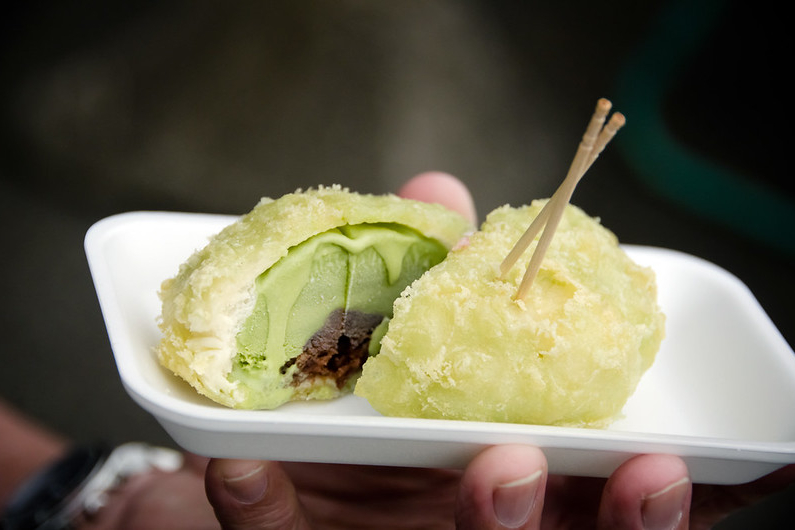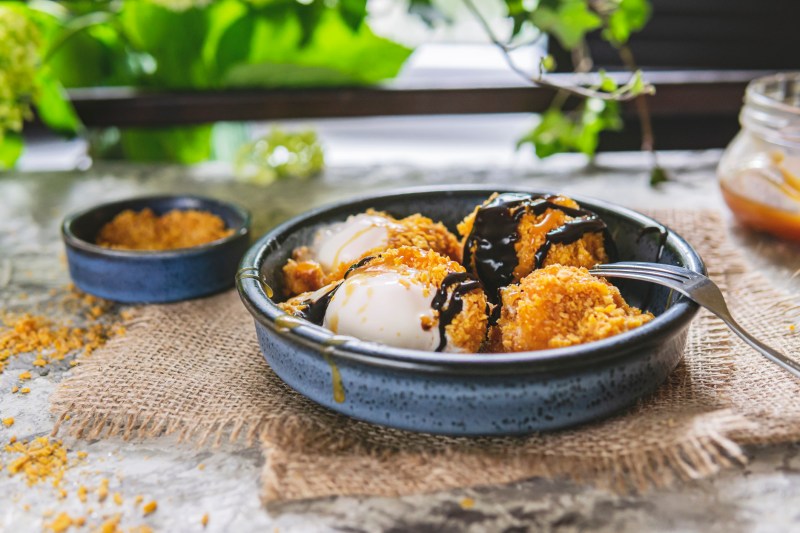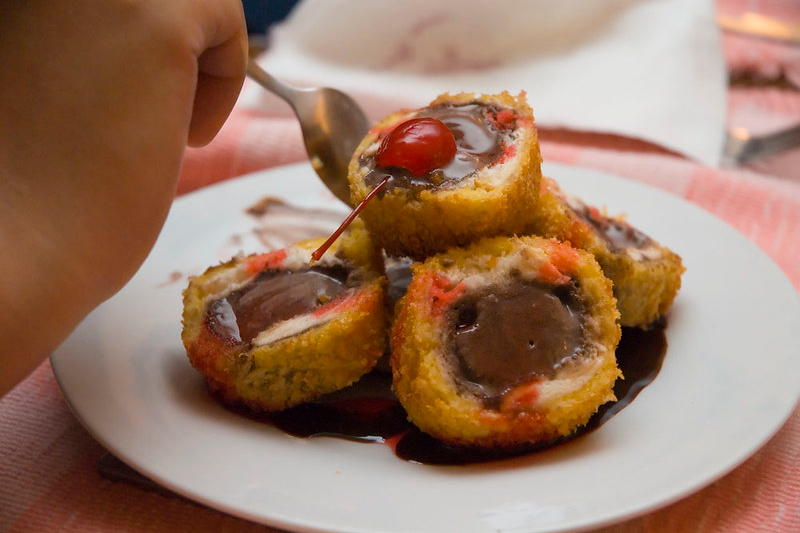Fried ice cream seems impossible — an icy dessert that’s prone to melting is somehow battered and fried. The whole concept doesn’t make sense. But when done correctly, fried ice cream is a deliciously whimsical treat that’s the perfect blend of temperatures and flavors. There are no strict rules to fried ice cream, giving this dessert an endless amount of variety and flavors.

Related Guides
- Best Ice Cream Brands
- How to Turn Astronaut Ice Cream Into a Grown-Up Dessert
- How To Make Taiwanese Shaved Ice
- Best Dessert Recipes
Who Invented Fried Ice Cream?

There’s no clear historical record to the inventor of fried ice cream. By all accounts, the popular version of fried ice cream first appeared in America. Some sources claim fried ice cream was first seen at the 1893 Chicago World’s Fair while others claim it arose from Japanese tempura restaurants in the 1960s. In America, fried ice cream is mostly associated with Mexican or Asian restaurants, reaching its pinnacle of popularity in the 1970s and 1980s. For Mexican restaurants, the dessert was predominantly featured on the menu of Chi-Chi’s, a Tex-Mex restaurant chain that’s now defunct in America (although the restaurant chain still exists in Europe and the Middle East).
The recipe for fried ice cream can be very different depending on the restaurant. In Asian restaurants, the batter is usually tempura style with ice cream flavors ranging from green tea to red bean or taro. In comparison, Mexican restaurants tend to favor batter made from corn flakes or cookie crumbs. At Chi-Chi’s, one of their most famous items was fried ice cream crusted with tortillas dusted in cinnamon sugar.
All About Technique

The key to making a successful batch of fried ice cream is all about using the right techniques. The most important step is to freeze and harden the ice cream. To accomplish this, scoop out your ice cream beforehand into balls and refreeze in the freezer on a tray. This will harden the ice cream balls and prevent them from melting in the fryer. For the oil, be sure to use a neutral cooking oil like canola or vegetable. Another helpful tip is to wear gloves when handling the ice cream balls for the batter. The body temperature of your hands can easily melt the ice cream balls, leaving a mess.
Remember, time is important for this recipe since ice cream is temperature sensitive. Set up on all your elements and ingredients before handling the ice cream balls for an efficient process. For instance, have your batter or coating set up already before you take out your hardened ice cream balls. The oil should also be close to ready. This will ensure a smooth preparation process. Fried ice cream should also be enjoyed immediately after it’s cooked.
For added flair. feel free to treat fried ice cream like an ice cream sundae, complete with sauces, toppings and whipped cream. Drizzle chocolate or caramel sauce and nuts on the fried ice cream for a showstopper dessert guaranteed to impress. Although making fried ice cream is tricky and time consuming, the end result is delicious and well worth the effort.



